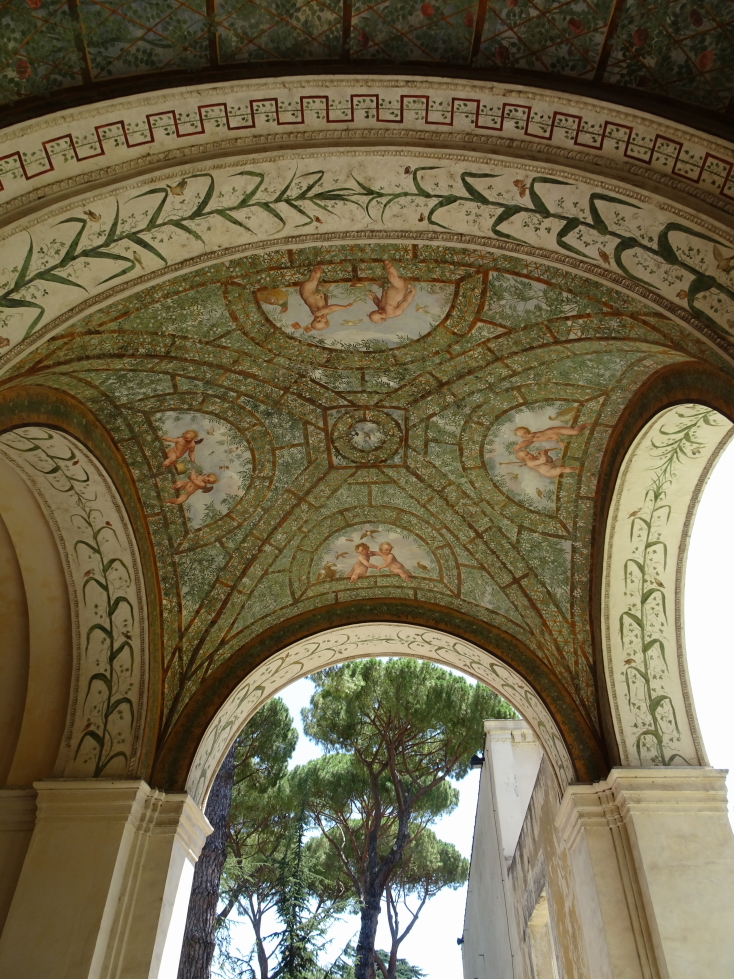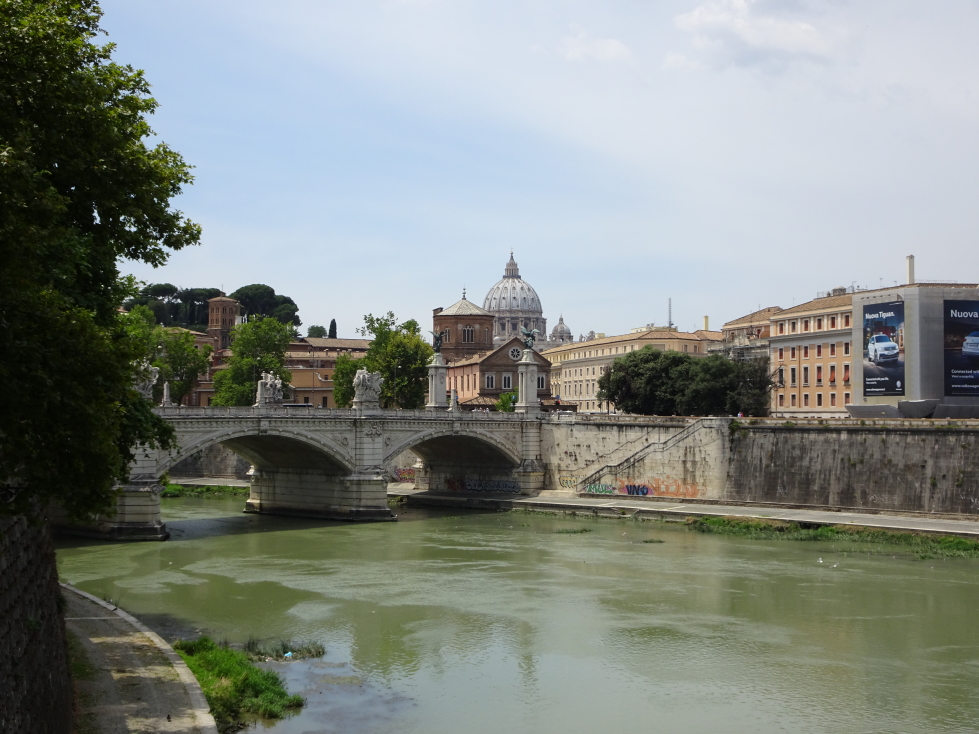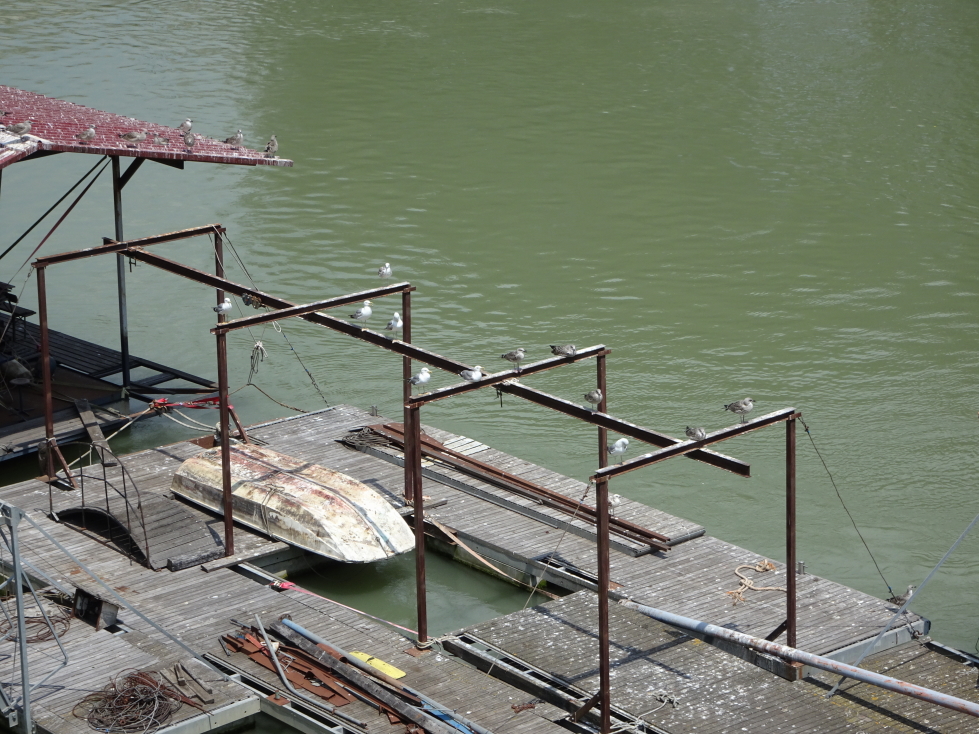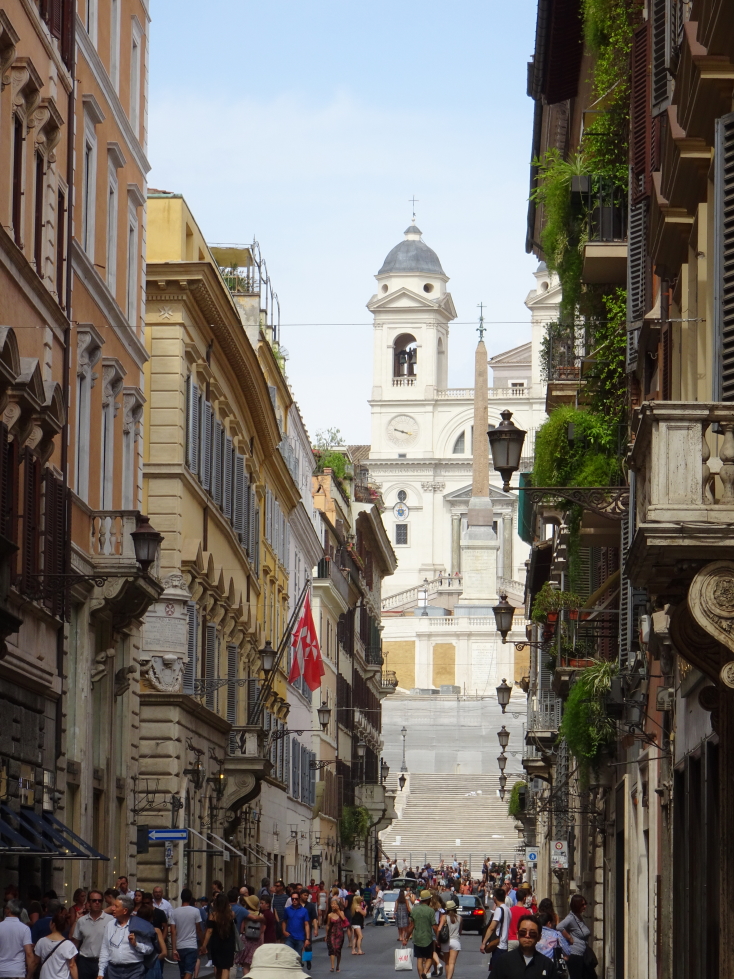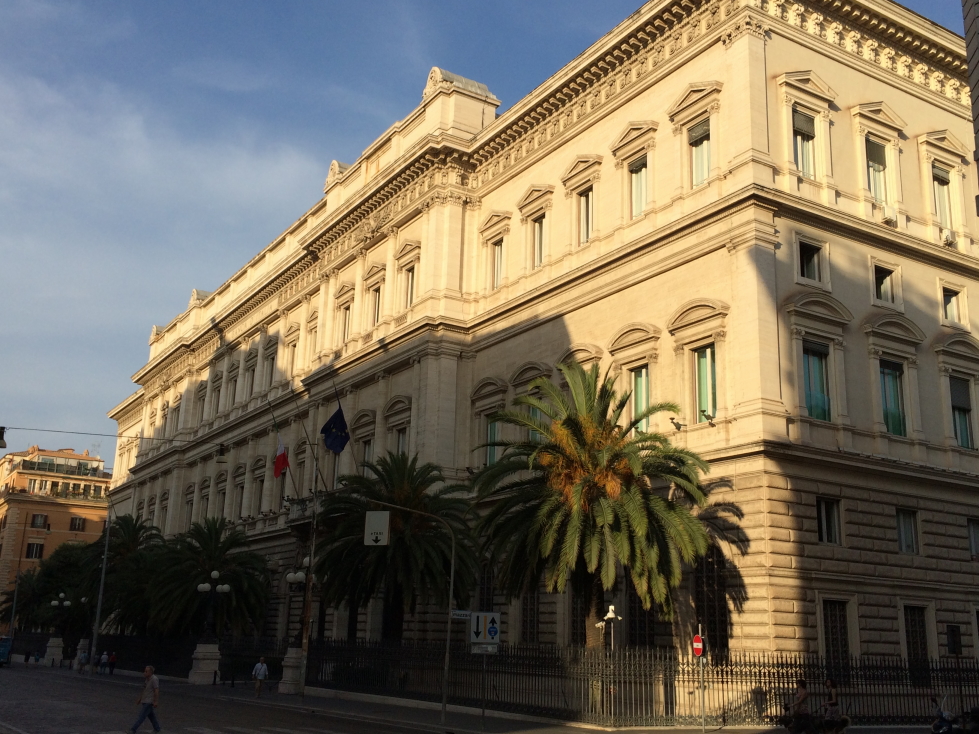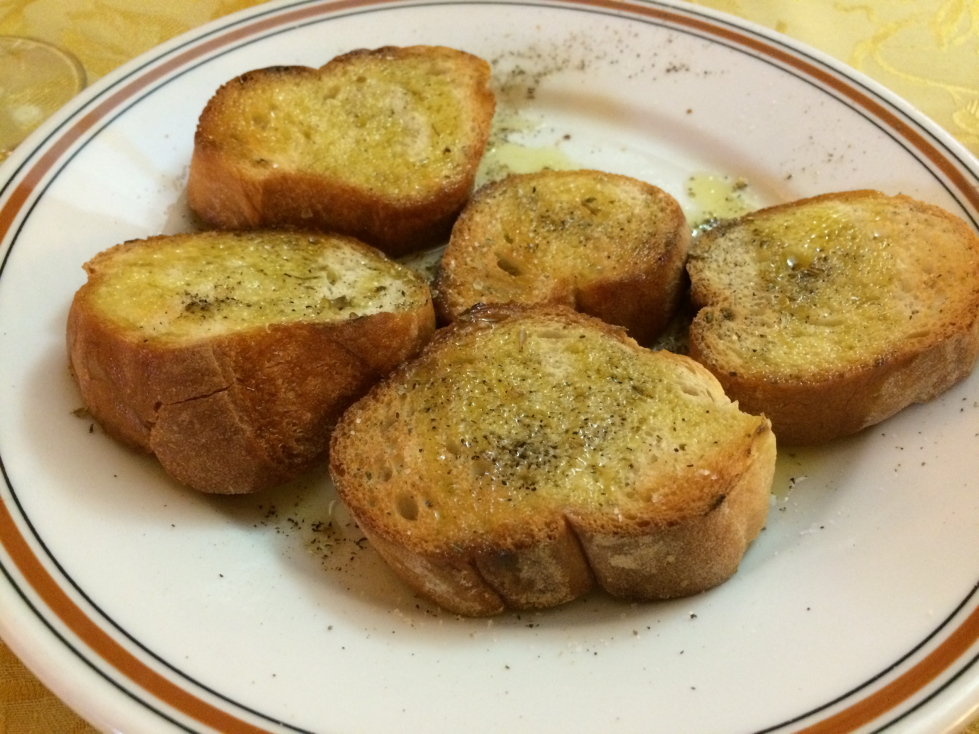Awoke about 8a and went upstairs for breakfast — eggs, hot dog sausages, lemon cake, and coffee. Quite good. Left the room about 10:00a and headed up Via Nazionale towards Roma Termini. As Genetta wasn’t to arrive until 11:40a I took the opportunity to take some pictures of the church at the end of Via Nazionale that incorporated parts of the absolutely massive Baths of Diocletian (which could accommodate up to three thousand people at once) into its structure. Not only that, a couple of adjacent structures were directly derived from the ancient marvel.

Basilica built within and from the ruins of the Baths of Diocletian
Turning right towards Termini there was a row of semi-permanent corrugated metal stands selling books, albums, and the like. One of the stands had historical comics (in Italian, of course). One called Alix set during the Roman Empire caught my eye. I had to wait for what seemed like ever for the seller to finish talking with another guy but eventually got my chance to engage him in conversation.

Stalls near Roma Termini station
While his English was a little rough it was a dang sight better than my Italian and we managed to have a conversation. We talked about historical comics (including a WWII pulp one that he favors) for a bit and when asked he’d never heard of Vasco, a French comic set in Middle Ages Italy that I’d like to find more copies of. I decided to buy all three Alix for 20 euros — not sure if it is a great deal but it’s far less than the MSRP and I was happy. One is about Spartacus, another about ancient Roman Egypt, and the last about barbarians and the Roman Empire.

Piazza della Repubblica, a major plaza near Termini and the Baths of Diocletian
Books in hand, I headed to Termini, getting there about 11:20a. Parts of the terminal were under construction so I couldn’t stand right at her arrival platform. Luckily, however, we were able to find each other after a small delay. We took a taxi back to the room at the Hotel Bolivar and got her luggage squared away then headed to Le Lanterne, a restaurant not far from the room. Genetta had spaghetti al cabonara and strawberries with whipped cream while I had the linguine al funghi porcini. Mine wasn’t great — the mushrooms were a little slimy and the noodles kinda hard. Oh well, can’t win them all. Besides, nothing a little gelato couldn’t fix! Genetta had dark chocolate and oreo while I went with my favorite coffee.

Oh, look! Mandatory Torre delle Milizie shot!
Headed back to the room and took a taxi across the Tiber to the suburbs just northwest of Rome to visit VIGAMUS, a video game museum. I was kind of ruined and sculptured out at this point and so was Genetta — we figured we’d relax and go to the video game museum, a bookstore specializing in role-playing games, and a comic book / book store, all in the same area.

Entrance to Rome’s VIGAMUS, a video game museum
A note to anyone going to VIGAMUS — it is hard to spot. It is in the basement of a building and one needs to look out for the banner above. After descending a flight of stairs we came upon a very small room with a counter and a few things for sale (sadly no magnets and the books were only in Italian). Beyond that were three or four rooms with displays containing various computers and consoles as well as games. There was also a special exhibition room and a larger room for people to give lectures and presentations. Finally, there were a few rooms with consoles, computers, and arcade games set up for play.

So many wonderful Infocom games depicted here!

Brutal Legend, on of my favorite games, in Italian
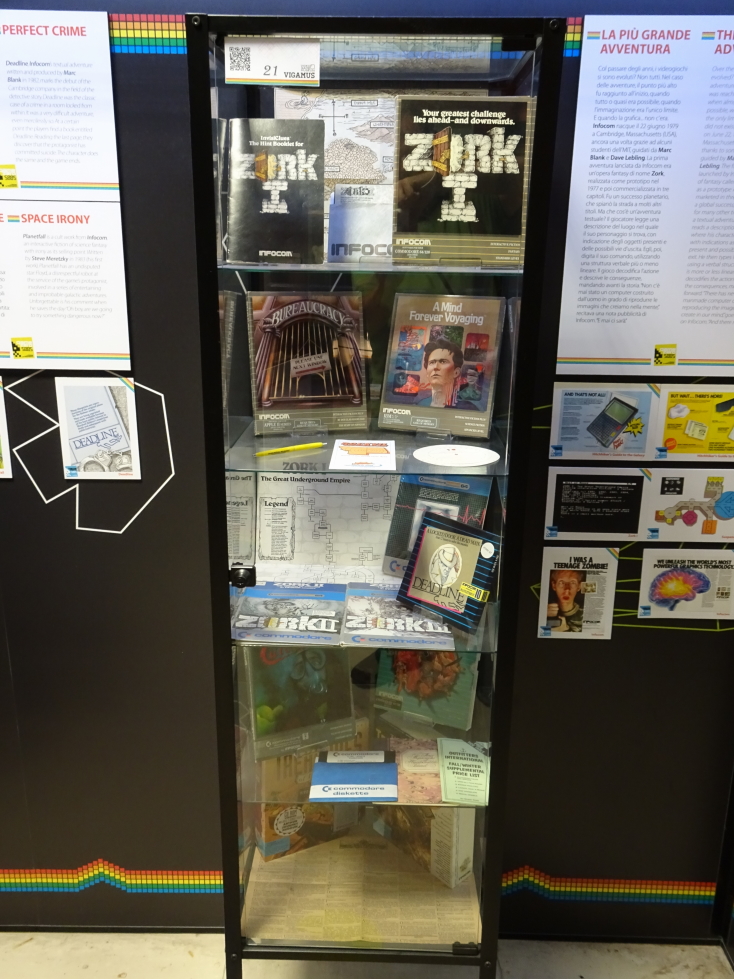
Display of Infocom treasures
The walls were decorated in theme, lots of video game art and characters. While small it left a good impression on me. There was a broad selection of computers and consoles on display and it covered many of gaming’s earliest games — Infocom and other text adventures, Atari and Intellivision cartridges, a selection of PC games, etc. There was also concept art from “Alice Madness Returns” and “Lollipop Chainsaw” and a few other games. Large statues of Lara Croft, a character from Dark Souls (I think), and others were about. There was some space dedicated to the video game crash of ’83 as well as the New Mexico landfill where many Atari 2600 cartridges (most famously E.T.) were buried.

Asteroids cartridge for the Atari 2600, one of my favorite pieces of video game art

E.T. Atari 2600 cartridge recovered from the New Mexico desert

Concept art from “Alice Madness Returns”, one of Genetta’s favorite games
The exhibition was Assassin’s Creed. There were playable stations of all of the entries set up, surrounded by various collector’s editions stuff as well as a couple of large statues and some concept art. Genetta and I had a blast playing through some of Assassin’s Creed II in their version of Florence, having just spent a lot of time there. While it certainly captured the feel of Florence it most definitely didn’t feel very accurate.

Assassin’s Creed on exhibition

Assassin’s Creed concept art

One of the rooms of VIGAMUS
There was little on display about the Odyssey2, sadly, and I thought that their treatment of the RPG genre was very light. There was a single glass case with some Witcher series items in it but almost nothing else RPG-wise — no Wizardry, no Bard’s Tale, no Ultima (very surprising as Italy is known to be a hotbed of Ultima fandom), no Baldur’s Gate, etc. Very surprising.

An example of the informational wall text, this about Pitfall!

Space Invaders, an oldie but a goodie

Another look at one of the rooms in VIGAMUS
I was tempted by one of the books in the bookstore but as it was Italian I decided to pass. I kind of regret that now, it was pretty neat. Oh well.
Leaving VIGAMUS we walked the short distance to Avalon Roma, a bookstore selling role-playing games. They had quite a bit of Savage Worlds stuff as well as The One Ring (which makes sense as the primary game design is by an Italian). They also had a version of Dungeon World with nifty tabs that would make it a lot easier to flip through. They also had Paizo adventure paths as single hardback books for 60 euros, a substantial savings over buying the six softcover books individually. There was also a crazy-looking RPG based on modern horror in an alternate history that had among other source books one about the American South. Their treatment of taboo subjects here in the US like the Klan was shocking. Not that it was favorable to them or anything, just that it was in a RPG source book at all was eye-opening.
The proprietor, Vittorio (I think that is how it is spelled), was extremely nice and we talked at length about Italian RPGs like Kata Kumbus and this other one that was a grim dark treatment of Renaissance Europe with the walking dead. Sadly as I don’t read Italian — and was accompanied by Genetta who wasn’t shy about reminding me about that fact — I had to pass on buying any books. I did, however, buy a cloth map for Kata Kumbus that was basically Italy rearranged, even down to the place names. A nifty souvenir!
Walked a little farther to Pocket 2000, a bookstore with comics, toys, etc. It was stuffed wall to wall, to the point that it felt like a maze. They had a good selection of stuff and plenty of historic comics including more Alix. Once again Genetta reminded me that I don’t read Italian so we left without buying anything.

Pocket 2000, a book store with comics, toys, and the like
Headed south towards Vatican City where Genetta convinced me to get us a taxi. Despite it being a Saturday there was crazy traffic and (because it was a Saturday) many pedestrians milling about. We also saw a Lamborghini, though I suppose they aren’t crazy rare in their homeland! We also saw a column erected by Marcus Aurelius before 193AD that I hoped to go back and see.
Back at the hotel we rested a bit then headed out to Ristorante Petrucci for dinner. We had the garlic bread as an appetizer. Genetta had veal with fries while I had spaghetti with bacon and tomato sauce that was quite decent. Once back at the room around 8p we packed and I worked on the blog. We then Facetimed with Michelle and wished Darby a good trip to London. Finally I watched Italy and Germany play in Euro 2016 (1 to 1, Germany won on penalty kicks) while Genetta slept. I finally turned in about midnight.

Hotel Bolivar sign at dusk














